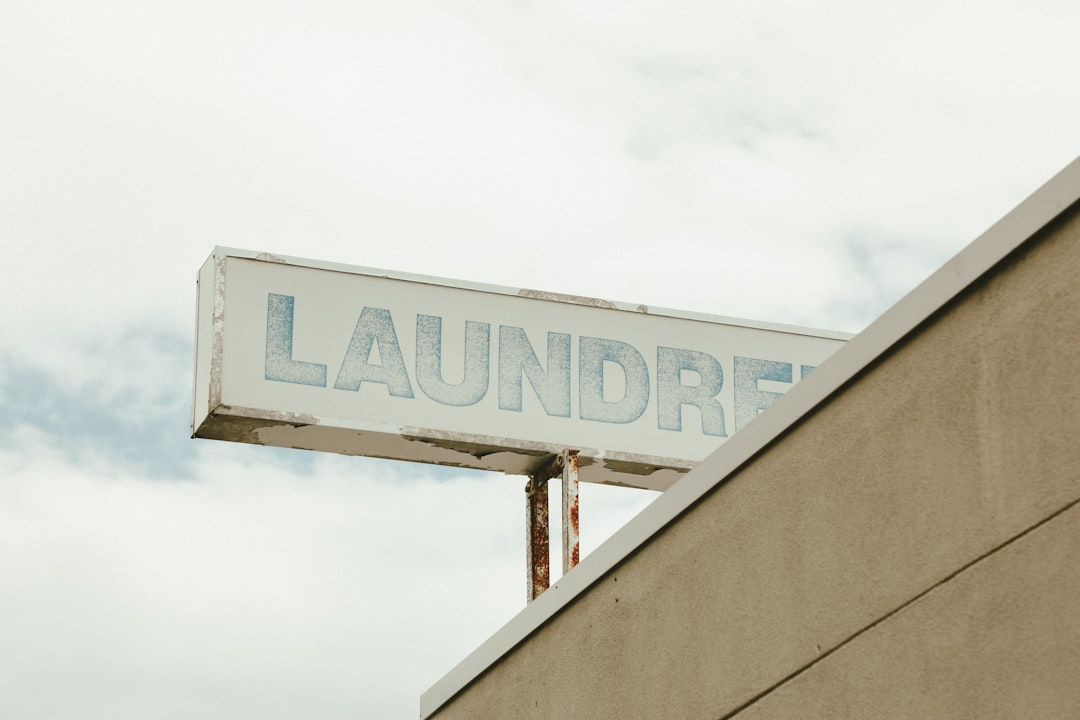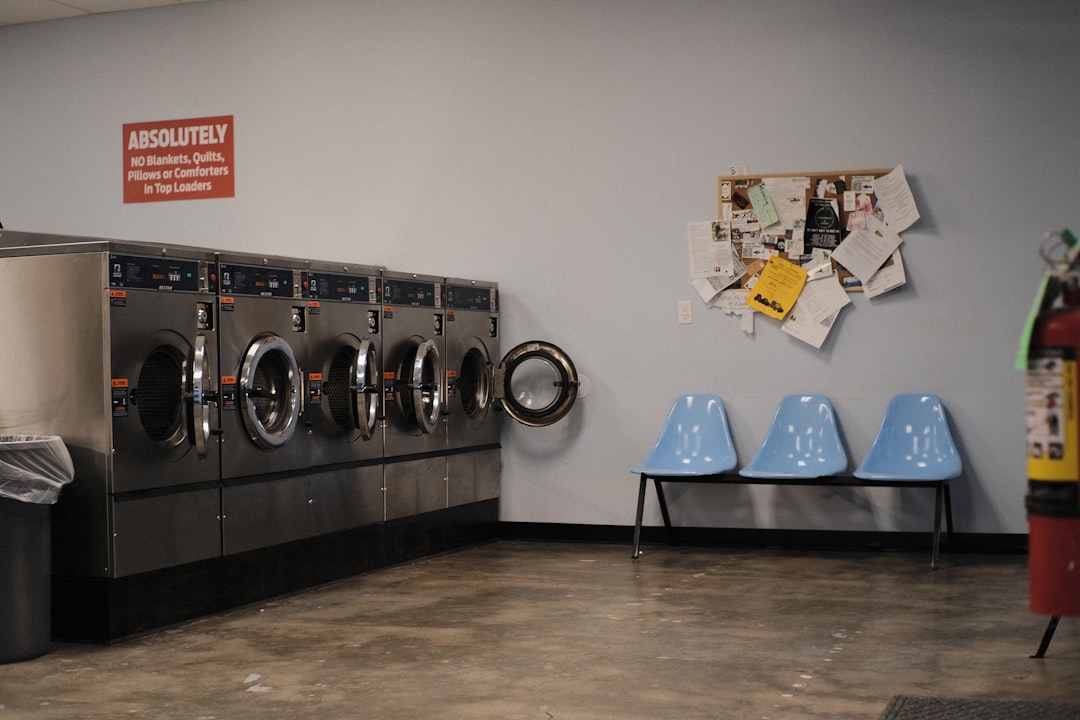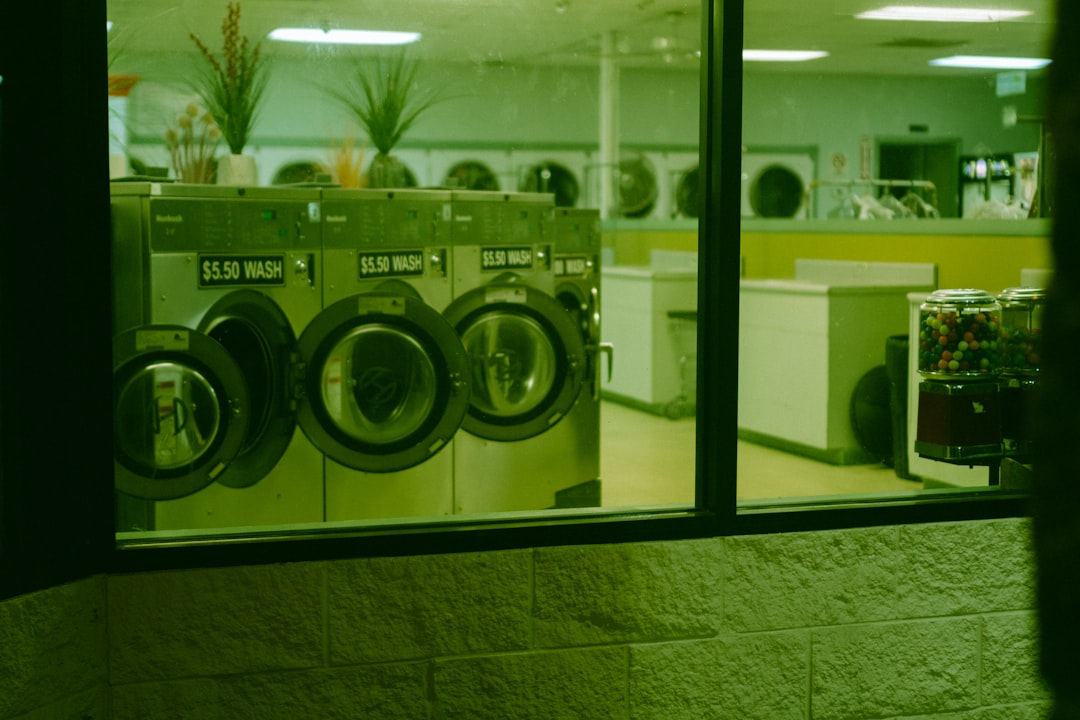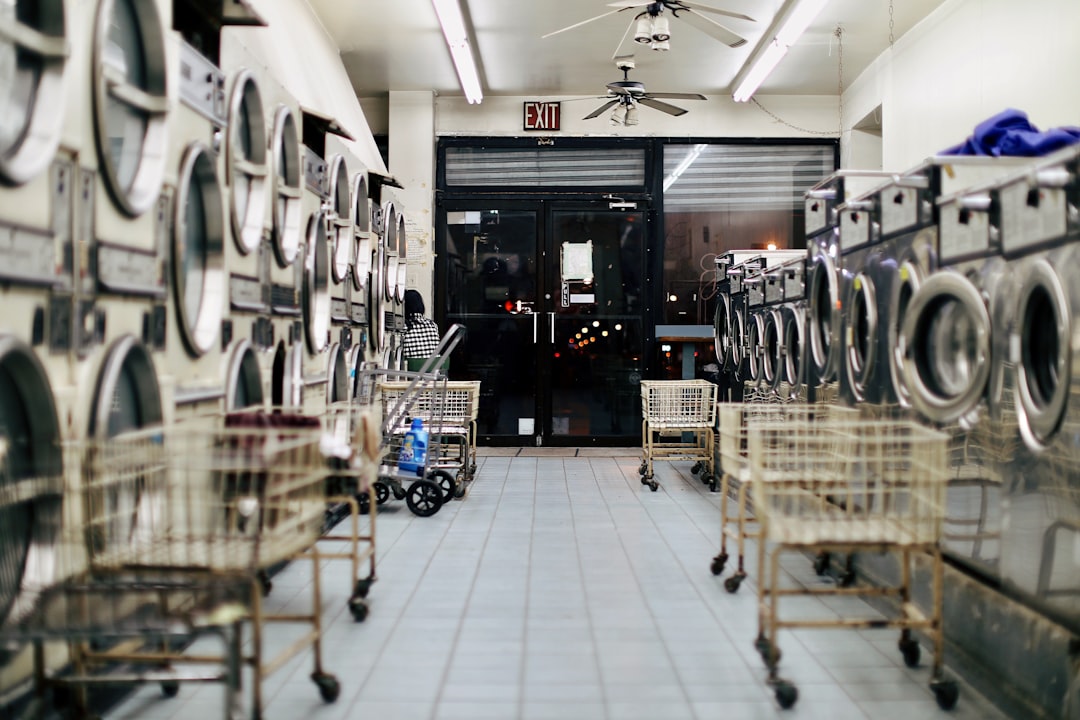

Engage prospects with a scan and streamline customer engagement with FREE QR code marketing tools by Sona – no strings attached!
Create a Free QR CodeFree consultation

No commitment

Engage prospects with a scan and streamline customer engagement with FREE QR code marketing tools by Sona – no strings attached!
Create a Free QR CodeFree consultation

No commitment
QR codes have quickly become essential in connecting physical and digital experiences for laundry services. For laundromats, dry cleaners, and on-demand laundry businesses, QR codes bridge the gap between in-person interactions and digital actions like order tracking, promotions, and payments, without the need for a complex app. They turn paper signs, bag tags, and receipts into gateways for scheduling, tracking, and loyalty programs, which reduces friction for customers and gives operators measurable data.
This transformation is crucial as competition increases and customer expectations grow, while laundromats still face challenges like anonymous walk-ins and fragmented marketing data. Laundromats are a captive audience environment where well-placed QR codes can drive action. Operators often miss revenue when high-value prospects go unnoticed, with traditional CRMs and analog processes unable to capture crucial opportunities. By integrating QR codes with a data-driven approach, businesses overcome these blind spots, achieving not only smoother operations but also better tracking, follow-up, and targeted engagement.
Explore how to leverage QR codes in your laundry service strategy to increase engagement, track customer touchpoints, and uncover new revenue opportunities, all while solving the key challenges facing the industry. Used correctly, QR codes become part of a connected funnel that captures intent at the point of need and turns it into conversions you can attribute and scale.

QR codes connect offline laundry service experiences with digital customer journeys, boosting conversions and enabling smarter marketing, especially where high-potential leads might go untracked. Outdated analog processes, such as paper loyalty cards, handwritten order forms, and static coupons, often cause valuable prospects to be missed and make ROI difficult to measure. By replacing these analog touchpoints with action-oriented QR codes that link to mobile-first experiences, operators shorten the path from interest to conversion and capture data they can act on.
Start by mapping your most common offline interactions: a customer waiting for a wash cycle to finish, a first-time visitor reading the pricing board, a hotel partner sending out guest laundry bags, or a delivery driver dropping off a completed order. Each of these moments can host a unique QR code that drives a clear next step, such as booking a pickup, enrolling in a wash plan, or leaving a review. The key is to make scanning the fastest and most rewarding action available.

Laundry operators face ongoing challenges like bridging the gap between offline and online customer journeys and gaining visibility into which activities drive growth. Traditional analytics cannot track anonymous walk-ins, especially when interactions are confined to cash transactions or printed signage. As a result, valuable intent signals vanish without powering remarketing or retention.
QR codes provide a seamless way to move customers from analog environments to digital experiences. Customers can scan to schedule a pickup, join a loyalty program, pay a bill, or track an order without downloading an app. This immediacy helps operators capture first-party data at critical moments and personalize future communication. For laundromats and dry cleaners, this provides a way to replace guesswork with data on which channels, locations, and offers are actually working.
For laundry marketers, adding QR codes to receipts, bag tags, partner packaging, and storefront windows converts everyday interactions into trackable moments. Over time, these scans form a measurable journey from awareness to repeat purchase, improving both customer experience and marketing efficiency.

Laundry services often lose segmentation and targeting without tailored QR solutions. Choosing the right QR format for the task helps capture intent while keeping the experience simple for the customer. Use dynamic QR codes for campaigns that require analytics, flexible destinations, or integrations with marketing tools, and use static QR codes for fixed, non-trackable needs such as a permanent Wi-Fi login.
Below are the formats that consistently deliver in this vertical and how to deploy them:
Dynamic QR codes can be updated as services change, which avoids confusion from outdated codes and lets you run time-bound offers or A/B tests without replacing physical materials. Sona QR supports all formats in a single dashboard and makes it easy to manage at scale.

QR code growth is unlocked by addressing pain points like anonymous walk-ins and fragmented campaigns, then embedding codes at moments of high engagement. Think about where customers linger, wait, or make decisions. Those locations are fertile ground for conversion-oriented CTAs and measurable scans.
There is no one-size-fits-all approach, but certain placements repeatedly outperform for laundry brands. Balance visibility with scannability, ensure adequate code size, and pair every code with a benefit-driven call to action that tells people exactly what happens when they scan.
Placing QR codes strategically across these environments ensures segmented engagement at each customer interaction. Over time, you will see clear patterns in which media and messages lead to conversions, which lets you shift budget toward the highest return placements.

Laundry businesses often miss engagement and upsells when customer intent goes unrecognized. QR codes close these gaps by prompting a next step and capturing data at the moment of motivation. The most effective use cases map directly to revenue outcomes and retention. For laundromats, QR can drive measurable laundromat conversions.
Two keys to success are clarity and incentive. Customers should know exactly what they get from scanning and why it is valuable. Even small perks such as a first-time discount or express turnaround notification can drive meaningful lift in scan and conversion rates.
You can expand these use cases further with referral offers, instant review requests, and subscription upgrades. Each one creates a measurable signal you can use to segment audiences and personalize your outreach.
Laundry services often fail to build valuable audiences because they do not track high-intent prospects at the right moment. A QR scan is a rich, time-stamped signal that captures location, context, and intent. By placing unique codes across touchpoints, you automatically segment your audience by behavior and readiness to buy.
This segmentation powers smarter retargeting and lifecycle marketing. You can tailor messages for first-time visitors, repeat customers, corporate accounts, or seasonal users such as students. When you sync these segments to your CRM and ad platforms, you create always-on loops that convert interest into revenue. For paid media execution, see intent retargeting from Sona.
With Sona QR, each QR code becomes a smart entry point to your funnel. Scan events are captured, enriched, and synced automatically, so you can retarget based on real behaviors rather than assumptions.
Disconnected campaigns waste spend and create inconsistent messaging. QR codes unify offline and online engagement by making every physical asset measurable and actionable. When you centralize QR code management, you can coordinate promotions across storefronts, mailers, delivery bags, and social content while maintaining a single source of truth for analytics.
For laundry services, the marketing mix often spans local print, in-store signage, partnerships with residential properties, and community sponsorships. By embedding QR codes and monitoring performance, you know which channels to scale and which to rethink. Use Sona QR to manage codes, monitor performance, and sync scan data to your CRM and ad tools.
QR codes serve as the offline onramp to your digital marketing engine. They also unlock a new layer of data collection across channels that were once difficult to measure. With a centralized platform like Sona QR, you can manage all your codes, monitor performance, and sync scan data with your CRM and ad platforms.
Start with a clear business outcome and the moment of intent you want to capture. Examples include increasing wash plan enrollments, scheduling same-day pickups, reducing customer service calls, or collecting more reviews. The more specific the goal, the easier it becomes to design the right destination and measure success.
Consider the physical context where the scan will occur. A code on a washer door might be perfect for loyalty enrollment while a code on a delivery bag should promote reordering. For a vertical-specific example, target apartment complexes with a door hanger that says Scan to schedule a pickup tonight and attribute scanning to the property.
Select between static and dynamic QR codes. Static codes point to fixed destinations and are suitable for evergreen resources like a permanent price list PDF. Dynamic codes are editable and trackable, which is ideal for campaigns that need analytics, A/B testing, or future flexibility.
Dynamic codes shine when you want to iterate on offers without reprinting. They also unlock deeper insights, such as time of day trends or device breakdowns, that help you improve landing pages and CTAs. Sona QR supports both, with dynamic features that make optimization straightforward.
Design for clarity and scannability. Incorporate brand colors and a logo while maintaining strong contrast between the code and background. Include a clear frame or caption that communicates the benefit, such as Scan to track your order or Scan for 15 percent off your first pickup.
Test the code across devices, distances, and lighting conditions before printing at scale. Consider the scan distance and angle based on where the code will live. For example, a code on a high wall sign needs to be larger than one on a countertop. Validate that the landing page is mobile-optimized with fast load times.
Roll out your codes where your customers already are. For laundromats, this includes machine doors, folding tables, vending machines, checkout counters, and window decals. For on-demand services, focus on door hangers, lobby posters, delivery bags, and vehicle wraps. Use unique codes per channel or location so you can compare performance.
Stagger deployment to learn quickly. Begin with two to three placements per location, compare scan rates and conversions, then expand to the best performers. When possible, integrate with local partnerships such as apartment buildings or gyms to unlock new demand.
Tracking turns engagement into compounding gains. Monitor scan volume, conversion rate, device type, and location. Look for patterns by daypart, neighborhood, or code placement. When you see a winner, scale it; when a placement underperforms, adjust size, CTA, or incentive.
Optimization is ongoing. Test different offers, CTAs, and landing page formats. Use Sona QR analytics to see real-time performance and Sona.com to attribute scans to revenue. Sync data to your CRM so you can trigger timely follow-ups like abandoned booking reminders or loyalty tier upgrades.
Connecting offline touchpoints to digital outcomes has historically been difficult for laundry services, which leads to missed segments and uncertain attribution. QR analytics change the equation by providing visibility into who scanned, where they scanned, and what they did next. When combined with CRM data and attribution tools, you can prove impact and fine-tune spend.
Sona QR captures scan-level data in real time, including device, time, and location. Sona.com links that engagement to customer profiles and revenue outcomes through identity resolution and multi-touch attribution. The result is a full picture of progression from first scan to completed order, which makes QR codes part of your performance marketing stack rather than a standalone tactic. See how Sona evaluates multi-touch attribution.
Actionable metrics replace guesswork. Benchmarks to monitor include scan-to-visit rate, visit-to-booking rate, average order value by source, and the percentage of new customers who enroll in loyalty during their first 30 days. Over time, these insights inform smarter creative, better placements, and a higher return on spend.
As you scale QR usage across surfaces and campaigns, a few best practices will help you maintain high scan rates and drive real outcomes. Focus on clarity, consistency, and follow-through. Make scanning the most appealing action available, and ensure that every scan leads to a mobile experience that works.
These tips have proven effective for laundromats, dry cleaners, and on-demand laundry operators. Adapt them to your physical environment and the tools you already use.
Continuous integration with existing tools boosts efficiency and customer satisfaction. Over time, these practices compound, turning every location and campaign into a measurable growth engine.
QR codes offer laundry services a powerful way to connect receipts, bags, and signage to meaningful customer engagement. By addressing major industry problems, such as unknown walk-ins and inconsistent messaging, a holistic QR approach leads to better retention, revenue, and visibility. When you place a code at every moment of intent and route it to a fast, mobile-optimized experience, you make it effortless for customers to act and for your team to measure what works.
As QR programs mature, operators who centralize management, run ongoing tests, and connect data to CRM and attribution tools will pull ahead. Sona QR gives laundry brands the foundation to generate, track, and optimize codes at scale, while Sona.com connects those scans to revenue. Start small with two or three high-impact placements, learn quickly, and expand with confidence. Start creating QR codes for free.
QR codes have transformed laundry services from routine tasks into dynamic, customer-driven growth opportunities. Whether it’s streamlining customer acquisition, enhancing the convenience of service interactions, or gaining actionable insights into customer preferences, QR codes replace traditional friction points with instant, mobile-friendly solutions that boost engagement and drive repeat business. Imagine customers effortlessly scheduling pickups, tracking orders, or accessing promotions—all through a simple scan.
With Sona QR, you can create dynamic, trackable QR codes in seconds, update campaigns instantly without costly reprints, and directly link every scan to revenue outcomes. This means no missed opportunities and smarter, more profitable customer journeys tailored to your laundry service brand.
Start for free with Sona QR today and turn every scan into a loyal customer, a seamless transaction, or a measurable conversion.
QR codes connect physical laundry service interactions to digital actions like order tracking, scheduling, and loyalty programs, enabling customers to scan quickly without downloading apps and receive instant benefits.
QR codes reduce friction for customers, provide measurable data for operators, replace analog processes, enable targeted marketing, improve customer retention, and help track conversions and revenue.
Dynamic QR codes allow laundry businesses to update destinations, track scan analytics, run A/B tests, and integrate with CRM and marketing platforms for automated follow-ups without reprinting codes.
QR codes can link to mobile booking pages, order tracking, digital receipts, price lists, promotions, loyalty program enrollment, feedback forms, contact vCards, Wi-Fi access, and app downloads.
QR codes on laundry bags, receipts, or bag tags link customers to real-time order status pages and payment portals, reducing calls, increasing confidence, and enabling operators to track customer engagement and conversions.
Use Sona QR's trackable codes to improve customer acquisition and engagement today.
Create Your FREE Trackable QR Code in SecondsJoin results-focused teams combining Sona Platform automation with advanced Google Ads strategies to scale lead generation

Connect your existing CRM

Free Account Enrichment

No setup fees
No commitment required

Free consultation

Get a custom Google Ads roadmap for your business






Launch campaigns that generate qualified leads in 30 days or less.
